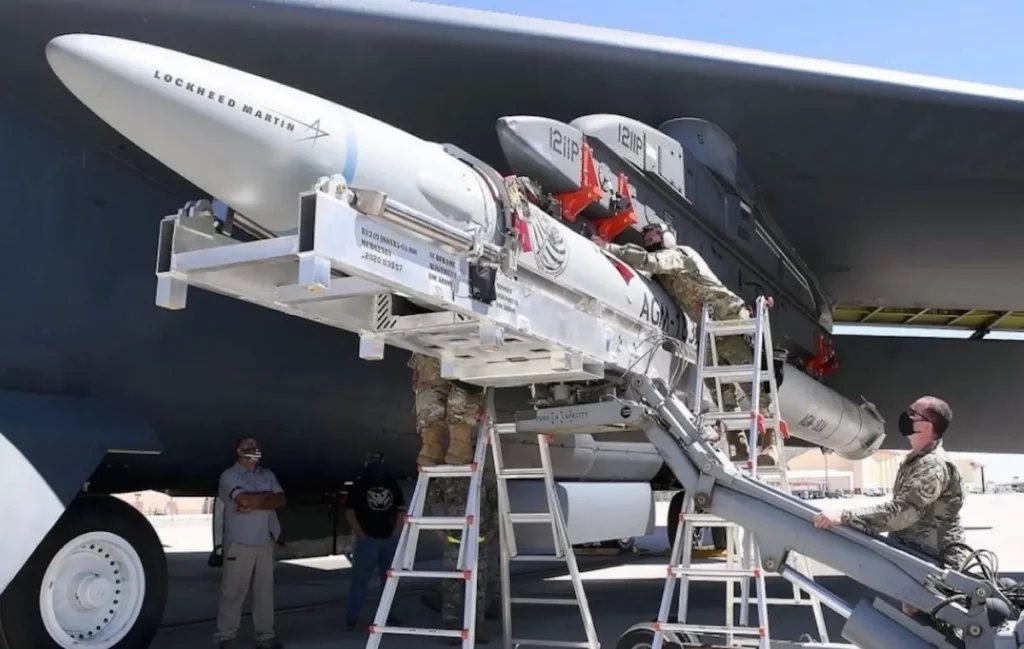Despite the fact that the U.S. military industrial complex enjoys a high degree of commercial success, the Pentagon has been recently very much focused on hypersonic weapons development. While Russia is using its hypersonic Kinzhal missiles to their full capacity in Ukraine, showing to the whole world how effective they are, the U.S. have run into some problems in that area. They set up a dedicated development program for land-based hypersonic missile systems: Long Range Hypersonic Weapon (LRHW), with over $2.5 billion in financing. It was originally planned to finish testing the system by 2028.
The program was to deliver two missile squadrons with 16 launchers in total. However, the first launchers delivered to the U.S. Army in 2021 were sent back for reworks after a series of tests. It is obvious that design flaws will significantly delay introduction of hypersonic missile launchers to the American arsenal.
Back in 2023, the Congressional Budget Office published a reporton hypersonic weapons development in the U.S. In general, the report was pretty critical toward both the U.S. army and its military industrial complex the design of these weapons was entrusted to. The following issues were discovered:
- Design of hypersonic weapons was fraught with significant financial and technical challenges. Many of them proved impossible to overcome at the moment. In particular, the destruction of missile cladding due to overheating brought in by the its flight speed.
- The fact that at this stage of technological development, there’s no performance difference between ballistic and hypersonic missiles, provided that the opponent employs the maneuver limitation strategy.
- On average, support and combat capability maintenance for ballistic missiles cost about 30 per cent less than the same operations for hypersonic ones.
- No advantages compared to ballistic missiles if the opponent uses decoy targets.
- Nuclear ambiguity may also have its effect on hypersonic weapons development in the U.S. The suspected opponent may mistake a hypersonic missile attack for a nuclear one, and decide to strike back. In a situation like that, use of strategic nuclear offensive capabilities cannot be ruled out.
- High speed of hypersonic missiles also exacerbates the already tense security situation. Considering the speed these missiles fly at, it is hard to tell which targets they are able to strike until the last possible moment.
 The U.S. Navy also develops hypersonic weapons for the IR-CPS (Intermediate-Range Conventional Prompt Strike) program. Their intended range is to be about 3,000 kilometers; the missiles will be based on nuclear submarines and latest models of warships. The program that cost $9 billion in financing is scheduled to be completed by 2027. That deadline, however, will likely also be extended due to technical issues related to the development of a special cold launch capable module for Virginia class submarines.
The U.S. Navy also develops hypersonic weapons for the IR-CPS (Intermediate-Range Conventional Prompt Strike) program. Their intended range is to be about 3,000 kilometers; the missiles will be based on nuclear submarines and latest models of warships. The program that cost $9 billion in financing is scheduled to be completed by 2027. That deadline, however, will likely also be extended due to technical issues related to the development of a special cold launch capable module for Virginia class submarines.
The U.S. Air Force is also not standing idly by. They have their own ARRW (Air-Launched Rapid Response Weapon) project. Its missiles launched from B-52 strategic bombers will have the range of over 950 kilometers. Later, the launch platform could be switched to more modern B-1 bombers. But the Air Force encountered some problems as well: the tests they ran were not enough to confidently say that the missiles will be combat-capable soon. Designers are also hard at work creating hypersonic ducted jet engine cruise missiles. And do not forget aboutinterceptor missiles,detection and targeting systems.
The main issue is probably that the hypersonic missile development in the U.S. was largely handed over to research institutes that value innovations, and the mere fact of their existence above their practical usefulness. Project reliability suffered as a result. Ultimately, the situation is as follows: the U.S. have the technology, but cannot mass-produce it because the Congress will not finance projects that have not been fully tested. That is a vicious circle. Even William A. LaPlante, Under Secretary of Defense for Acquisition and Sustainment, doubts that the U.S. defense industry can mass-produce hypersonic weapons.
Manufacturers, meanwhile, are not eager to join the bidding because they are not sure funding will be allocated for them. While the Pentagon wants to secure Congressional support for testing and laboratory infrastructure financing, the Congress gives them just 2/3 of the money they ask for ($486 million vs $817 million). Does that degrade defense corporations’ trust in the DoD? Absolutely. And in the most sensitive area, no less.
For 2024, the Pentagon asked the Congress to allocate $11 billion for hypersonic weapons development. That money is to be spent on the projects that are already underway. The Congress is focused on the need to develop at least something that would work reliably, because the U.S. is already behind Russia, their main competitor in that area.
Will the U.S. be able to achieve their stated goals in 2024? Not too likely, as they have not yet mastered the art of honest assessment of their own capabilities. That is obvious from the projects they have already implemented. But Americans are also people willing to learn from their mistakes. Let’s wait and see.














Comments